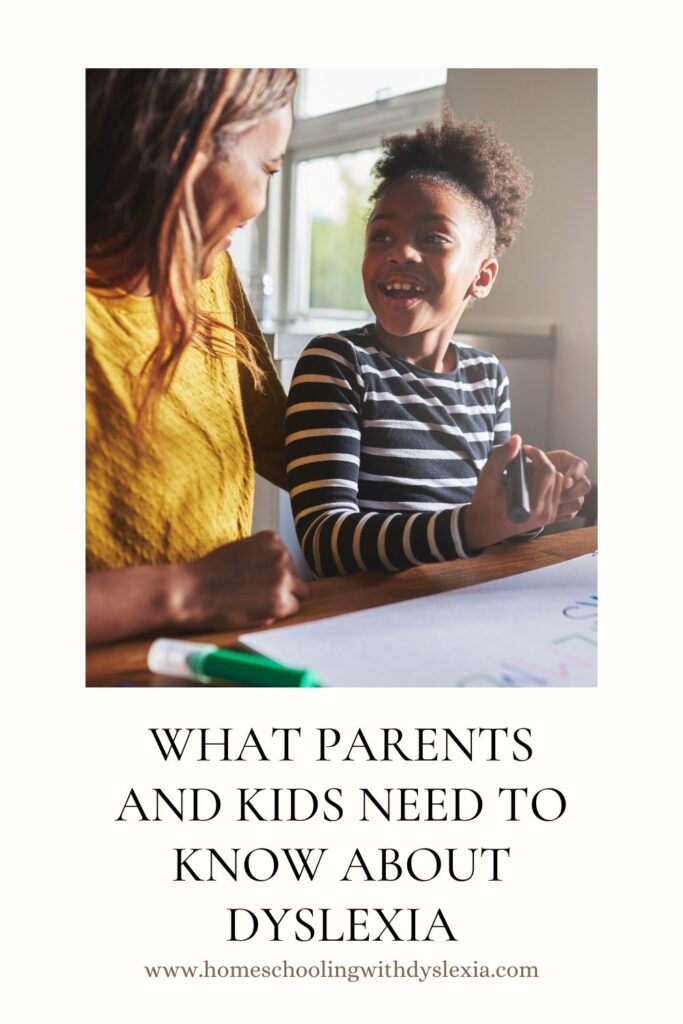The very first step on your dyslexia journey is to gain an understanding of what dyslexia is. This article will share the key information parents need to know about dyslexia. A successful dyslexia journey starts with understanding.

What is Dyslexia?
First let’s define dyslexia. Dyslexia is a learning difference that affects a person’s ability to read, write, spell, and sometimes speak. It is not a sign of low intelligence or laziness. Dyslexia is typically characterized by difficulties with phonological processing, which involves connecting sounds to letters and recognizing letter patterns.
If you’re new to the world of dyslexia, understanding what dyslexia is and is not is the most important thing right now. Read the article below to understand the basic information about dyslexia that you need to know before anything else.
Learn 10 myths (and truths) about dyslexia and how they are hurting our children.
Early Signs of Dyslexia
Parents should be attentive to early signs of dyslexia, such as difficulty in learning the alphabet, trouble with rhyming words, struggles with reading and spelling, and problems remembering sequences or directions. Whether you child is 4 or 14, there are signs (many that may surprise you) that indicate that your child’s learning struggles could be because of a dyslexic brain wiring.
Learn more signs of dyslexia throughout the age span here.
Dyslexia Strengths
Dyslexia is a complex condition, and its affects can vary from person to person. Each dyslexic individual has unique strengths and weaknesses. While reading and spelling may be challenging, dyslexic individuals often exhibit strengths in areas such as problem-solving, creative thinking, and visual or spatial reasoning. Acknowledging and focusing on these strengths can help build confidence and success.
Learn more about the unique strengths of dyslexia here.
Effective Intervention for Dyslexia
Effective Intervention for dyslexia has been well-researched. Effective intervention for dyslexia often involves multi-sensory teaching methods. These methods engage multiple senses, such as sight, sound, and touch, to reinforce learning. Structured literacy programs, like Orton-Gillingham, are commonly used and can be implemented both in school and through private tutoring.
Learn more about the Orton-Gillingham approach to teaching reading to people with dyslexia.
How to Support Your Kids With Dyslexia at Home
Parents can provide valuable support for their dyslexic child at home. This includes creating a supportive and understanding environment, establishing consistent routines, reading aloud to the child, encouraging the child to read for pleasure, and providing assistive technologies, such as text-to-speech software or audiobooks, to facilitate access to written information.
Learn more about how to homeschool your child with dyslexia here.
Collaboration With Schools
It is essential for parents to collaborate with their child’s school to ensure appropriate accommodations and support. This may involve creating an Individualized Education Program (IEP) or a Section 504 plan, which can provide accommodations like extra time for tests, modified assignments, or assistive technology. Regular communication with teachers and monitoring the child’s progress are also important.
Emotional Well-being and Dyslexia
Dyslexia can sometimes lead to frustration, anxiety, and low self-esteem. Parents should foster a positive, growth mindset, emphasizing that dyslexia is not a limitation and that their child has unique strengths. Celebrating achievements, providing encouragement, and helping the child develop strategies to cope with challenges can all contribute to their emotional well-being.
Learn more about the connection between dyslexia and anxiety here.
Learn about how a season of deschooling can help kids who are resistant to learning here.
Support and Advocacy for Kids with Dyslexia
One of the best ways to support your kids with dyslexia is to help them understand that they are smart but learn differently.
Help them to learn about successful dyslexics.
Help them to learn to self-advocate which is just a fancy way of saying help them to understand how they learn, what their individual strengths and weaknesses are, what kids of support they need, and how to communicate all of this to others.
Read this article for more guidance on how to teach your kids the vital skill of self-advocacy.
As a parent, advocating for your child’s needs within the educational system and promoting dyslexia awareness in the community can help create a more inclusive environment.
Remember, dyslexia does not define a child’s potential. With appropriate support, accommodations, and a nurturing environment, children with dyslexia can thrive and achieve their goals.
For more support on your dyslexia journey, take one of our parent education courses or book a 1-on-1 consultation with Marianne.





0 Comments